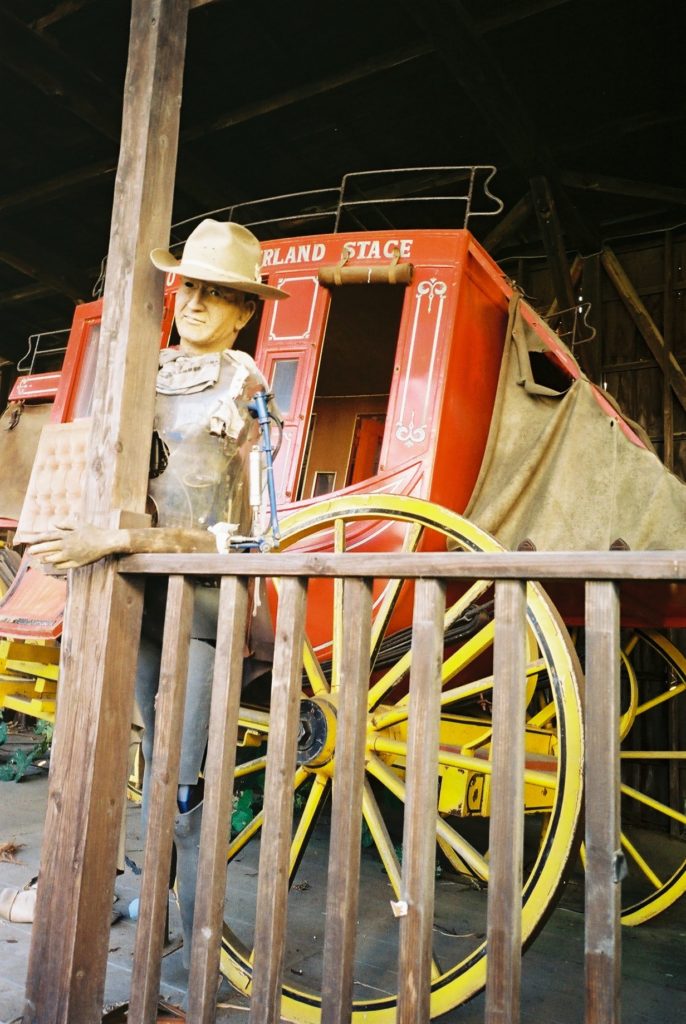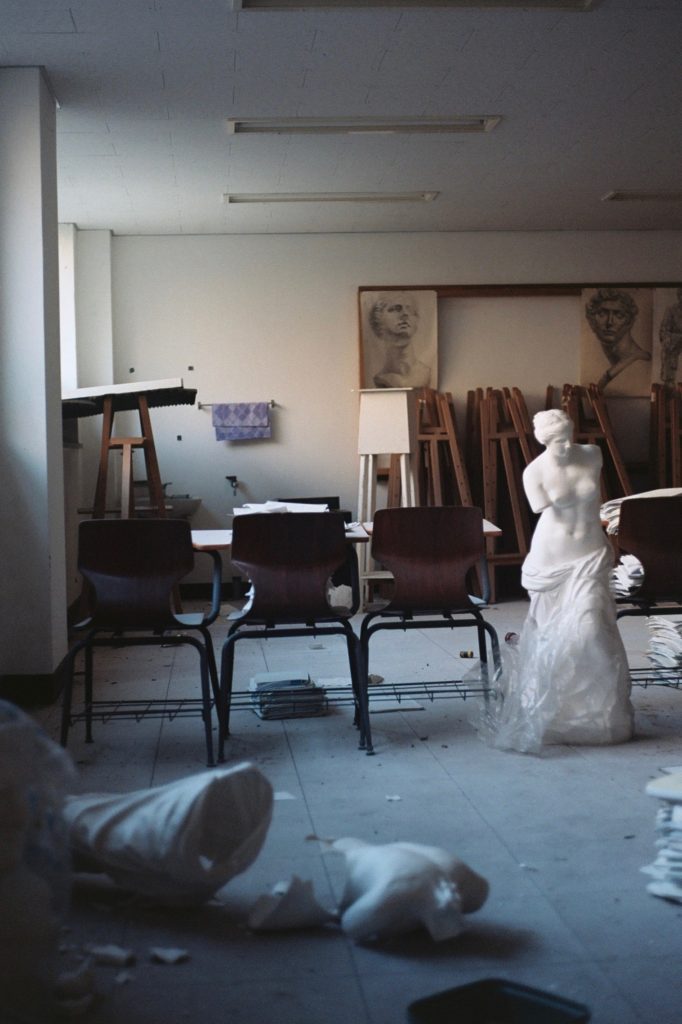A Layman’s Guide to Urban Exploration
Written and photographed by Ryan Berkebile
I am not a person who has a lot of nightmares. I never wake up screaming or sweating from dreams. For as long as I can remember, I have always dreamed involving the exploration of abandoned buildings. In these R.E.M.-induced scenarios, I ponder the contents found inside said dwellings. The surreal murkiness of dreams makes it difficult to recognize the artifacts discovered. I do not remember anything specific; all I know is that I have been having these dreams since before I was aware of urban exploration (도시탐험) as a hobby and subculture. Since late 2014, I have been turning my dreams into reality. It was around then that the realization hit me one day in an abandoned bowling alley in rural Jeollanam-do: I was weaving together my nighttime and daytime worlds.

Some of the places I have visited in daily life are stranger than anything my subconscious could produce. In previous articles of the Gwangju News, I have written about the (coincidentally named) Nightmare Lab (issue #201, November 2018) and an abandoned North Korean school in Japan (issue #197, July 2018), but these discoveries are just the tip of the proverbial iceberg. Imagine yourself coming across a fully furnished, abandoned airplane left to rust at a closed university. How would you feel? It is not something you come across every day. When my friend and I came across this weird discovery, pure amazement and curiosity did not even begin to describe the feelings we felt. If apathy is your first reaction, maybe urban exploration is not for you. What would be your first impression if you discovered headless and/or limbless animatronic cowboys at an abandoned amusement park in Japan? I was gleefully weirded out at this find. If you are genuinely creeped out, once again, maybe urban exploration is not your bag of tea.
Urban exploration is also not for the faint of heart. If you do not like getting dirty, feel guilty about casual trespassing, have a sensitivity to mold and dust, fear climbing over and under sharp fences, or are grossed out by discovering dead animals, then you will probably not enjoy this hobby. Perhaps the pictures taken while urban exploring strike your curiosity more than the activity itself. Fortunately, there are many YouTube channels, personal blogs, coffee table books, and Instagram hashtags to help you investigate this hobby from afar.

Let me take a step back and explain the world of urban exploration. Put quite simply, urban exploration is the investigation of man-made structures. Curious people from all over the world risk trespassing, injury, or even their lives exploring abandoned or mostly unseen structures. The levels of danger vary from place to place. If you go out on an adventure in Pripyat, Ukraine, you risk exposure to high levels of radiation. This is an extreme case, but many places you do go into can be mold-infested or structurally unsound.
Urban exploration is a catch-all term that attempts to encapsulate the various kinds of man-made structures explored. Sites are not limited to the urban setting; in fact, numerous exploration areas are found in the rural environment. Even the term “exploration” is misleading, as it conveys a sense of discovering something new. Explorers, or adventurers (as some prefer to be called), are in a sense modern archeologists attempting to document forgotten artifacts of the recent past. Those involved in the hobby refer to it in shorthand as UE or urbex. In Japan, the exploration of abandoned buildings is called haikyo, which is rooted in the Chinese characters 廃墟, which stand for “ruins of a castle.” I am particularly drawn to this strain of urban exploration and, in the succeeding paragraphs, will explain what attracts me to modern ruins.

Every devotee has a particular area of investigation that draws them into the hobby. Some adherents are passionate about climbing to the summit of active skyscrapers, cranes, or antennas. Yet others are dedicated to wandering the depths of underground structures like sewers and storm drains. In total honesty, we are often trespassing on someone else’s property. That aspect alone might dissuade you from having a favorable opinion of urbex. I might lose people at this point, but for those still willing to read along, let’s discuss the ethics of urban exploration.
Urban exploration is a synthesis of adventure, tourism, anthropology, and modern archeology. The ethics that apply in these areas are also valid in the world of urbex. Ideal tourists are considerate about their impact on the immediate surroundings. They make efforts to leave the area how they came upon it. Similarly, an ethical explorer considers how negative behavior will affect the neighborhoods explored, as well as the hobby as a whole. A thoughtful urbexer, like any knowledgeable anthropologist/archeologist, will also be an objective observer in the field. A mindful urbexer does not partake in pointless vandalism, take things from sites, or become a confrontational jerk. I advise creating mental notes on who is and who is not a dependable explorer. If there is any shadow of a doubt about a person’s conduct, avoid exploring with that person. Knowing whom you can trust as a person is critical to understanding whom you can trust to take with you on a mission.

No matter where you reside, urban exploration provides a unique opportunity to see your surroundings in a new light. You see things you might otherwise miss by going to the usual tourist destinations. Forgotten ruins or underground structures can be jumping-off points for discovering the history and culture of your area of interest. I have grown curious about traditional Korean spiritual practices from my visits to abandoned buildings and houses. My hanja (Chinese characters) comprehension skills have significantly improved through the desire to decipher the orphaned calligraphy scrolls and Buddhist art I discover.
One abandoned place in Gwangju, that we like to call “the Shaman Hoarder’s House,” provided us a sad, yet invaluable glimpse into the world of being a mudang (무당), or shaman. Open the door to this unusual house and you will know immediately the reason my friend and I named it so. The floor is invisible, as it is blanketed in trash and lost belongings. Any table or dresser is filled with layers and layers of Taoist and Buddhist charms. Throughout the house, yellow paper talismans written/painted in red ink called bujeok (부적) hang on the walls to offer protection against misfortune. I was befuddled and speechless from the sight, much akin to waking up from a night of vivid dreams. Who are the people who lived here? Where are they now? These are the repetitive questions I keep asking myself over and over again as an investigator in the conscious and unconscious realms.

The Author
Ryan Berkebile is an English teacher, analog camera fanatic, and urban explorer living in Gwangju. He has been teaching in Korea since 2005, with brief stops in Vietnam and Japan along the way. Visit longdistancerunner.org or @zen_compass to see photos and stories of his explorations.








I am enjoying the stories of UE in GN including yours and those of Isaiah. At the same time, I feel very sad while thinking of the futile side of our life. Your story on the North Korean school made me deeply depressed since it must have been a product of a group of people who made sacrifices to build and continue that school with the sole goal of educating young Koreans. Thank you for sharing your perspective on the urban exploration.